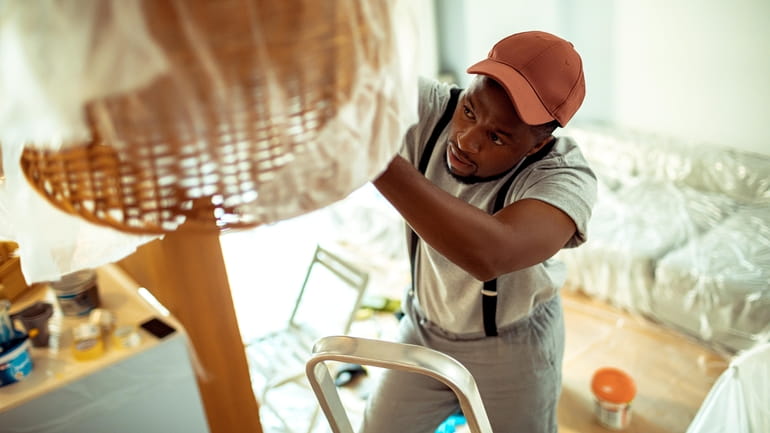5 do-it-yourself mistakes to avoid

The biggest mistakes DIYers make are often easily avoidable. Credit: Getty Images/TNS/Marko Geber
Do-it-yourself projects let you customize and upgrade your space while saving money and eliciting pride. But even with the most meticulous step-by-step instructions, DIYs don't always go to plan.
According to a recent survey conducted by the home services website Angi, nearly 80% of homeowners make a mistake while attempting to tackle a project themselves, which can result in expensive property damage, serious injury or even a home disaster.
Here are some of the biggest DIY mistakes homeowners make and how to avoid them.
1. Taking on too much
Consider why you want to do the project yourself before committing. Take time to research the time, skills and materials needed to complete it, and think carefully about whether you'll be able to handle it.
The costs of materials, power tools, safety gear and other essentials can quickly add up, and mistakes can be costly to fix. Mistakes can cost more in the long run than simply having a pro guide the project from the start. You don't want to end up with a big mess and an unfinished project.
2. Using the wrong tools
Always use the proper tools for each project, and ensure you know how to use them before diving in to avoid injury, longer working time or poor-quality results. This is especially important if your project calls for specialty tools, such as a certain type of power saw.
If a project requires expensive equipment that you don't own or plan to purchase, you can often rent the necessary tools at home-improvement centers or other rental companies. If you're not sure which tool to use for a certain project, always consult an expert first; a professional at your local home-improvement store can likely point you in the right direction.
3. Not prioritizing safety
DIY mistakes can be not only costly but also dangerous. Take your time and follow all safety guidelines when using tools or other equipment. Wear all necessary protective gear for the task at hand, which could include dust masks, safety glasses, hearing protection, long-sleeved clothing or gloves.
When tackling potentially dangerous tasks such as electrical work, stop and hire a professional if you have any doubts or run into any unforeseen issues.
4. Neglecting necessary codes or permits
Home improvement projects are often subject to regulations and requirements that help ensure safety. It varies by locale, but building permits are typically required for projects that involve changes to your home's structure or mechanical and plumbing systems.
Check with your local municipality to determine if you need a permit for your project, and familiarize yourself with the applicable building codes. Make sure your plans comply with local codes and ordinances before you begin any remodeling work. Neglecting the codes and laws in your area can delay your project and result in hefty fines.
5. Getting measurements wrong
Even a small discrepancy in measurements can throw off the entire project, but this common DIY mistake is easily avoidable. Taking the time to measure, mark, then measure again can help ensure you have the right fit the first time. Keep in mind that the actual dimensions of your purchased materials might be slightly off, so it's best to measure everything yourself to ensure accuracy.
To keep your measurements consistent, use only one tape measure or ruler throughout the entire project. Be sure to keep the tool straight and at a right angle to the surface you're measuring. Always double-check your measurements before continuing.
